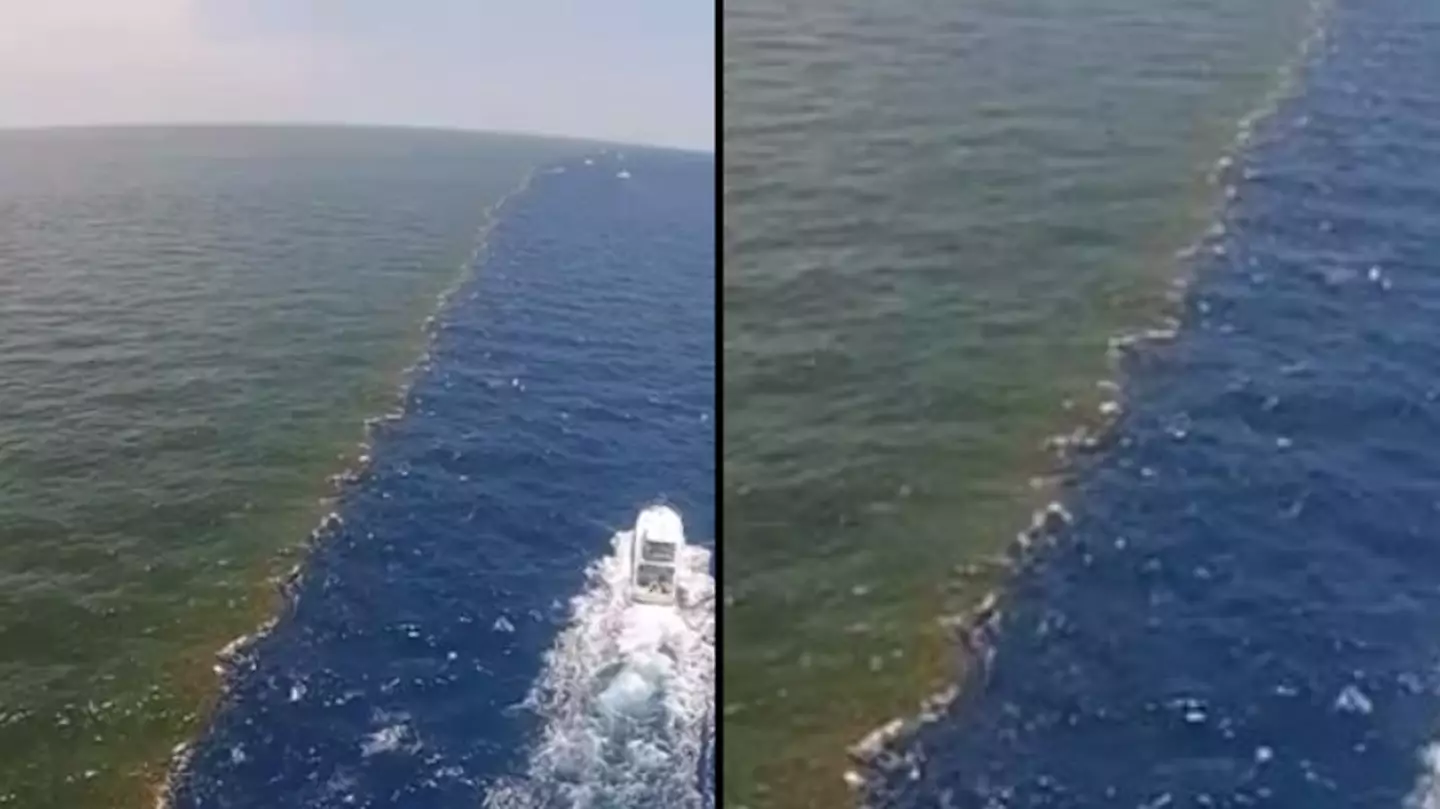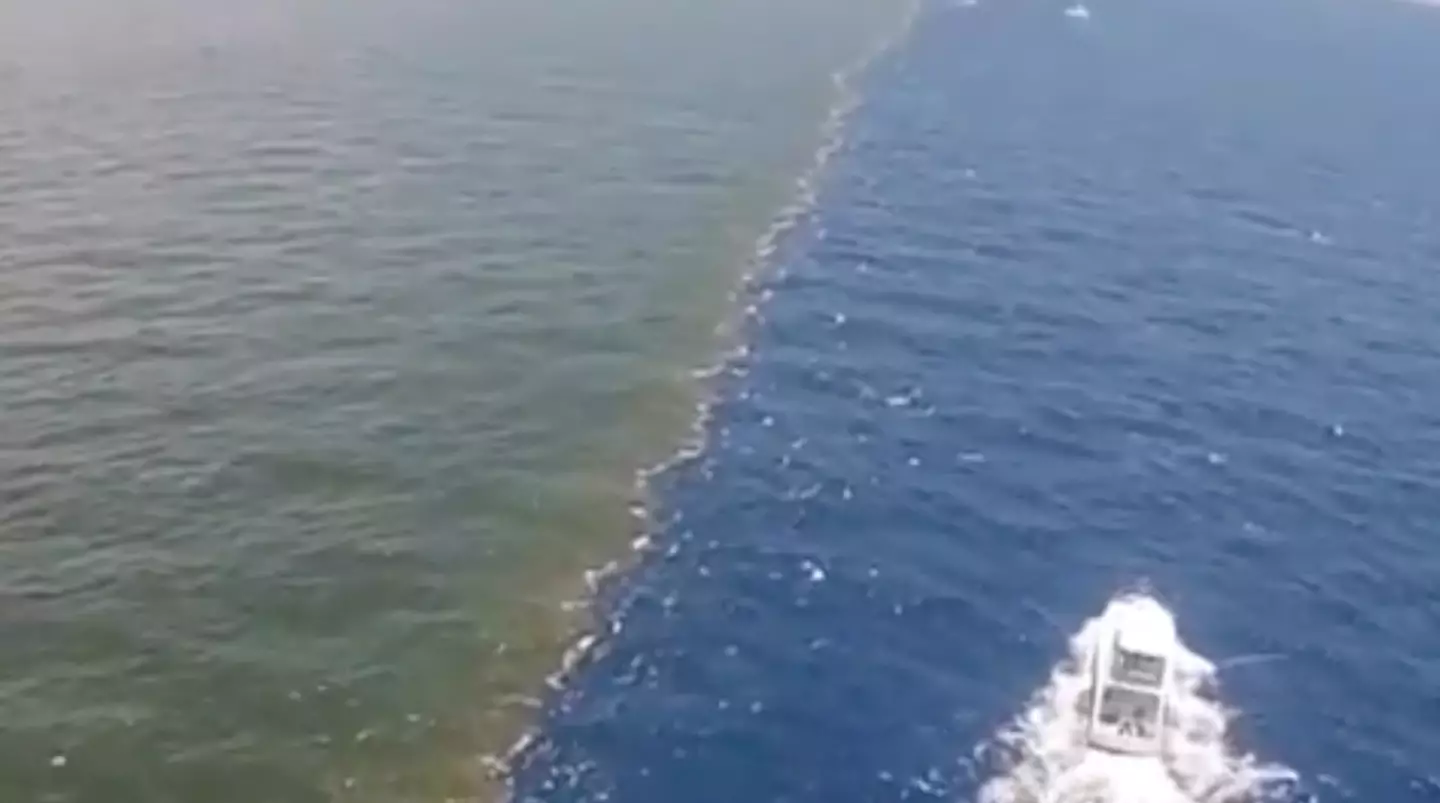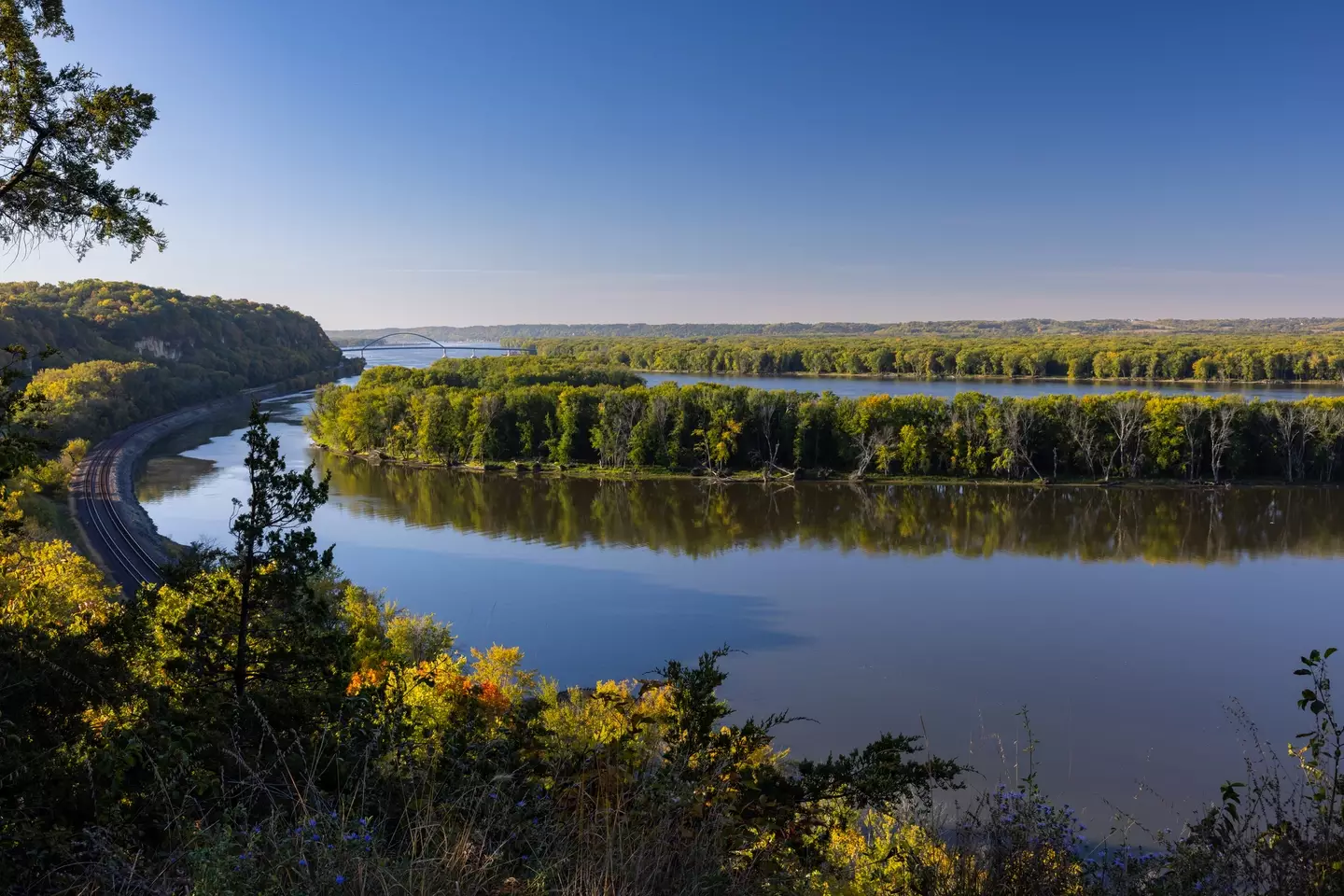
Several people have been left fascinated by a video that has emerged, showing the point where the famous Mississippi River meets the Gulf of Mexico.
On either side of their meeting point, the water is a different colour, showing off an incredible phenomenon, which you can see below.
But the reason behind it is actually quite scary.
What is the 'dead zone' in the Gulf of Mexico?
This point is called a 'dead zone' in Mexico's gulf, and it is created by the Mississippi River's proximity.
Advert
Many social media users claimed the images show the two bodies of water 'meet and touch but never mix together', but this isn't quite the case.
In fact, the reason behind it is because the Mississippi River is full of nitrogen and phosphorous, Snopes explains.
That's because 41 percent of the continental United States drains into the Mississippi, meaning the water ends up getting polluted by sewage in urban areas and nutrients from farmland.
All these nutrients - an estimated 1.7 million tonnes every year - cause phytoplankton to thrive, and this is very bad news indeed.

Why is the 'dead zone' bad for the environment?
Phytoplankton blooms lead to an increase in zooplankton that feed on phytoplankton, and when dead, both of these plankton rest on the seabed and decompose, depleting oxygen and creating hypoxic areas, aka 'dead zones'.
Advert
This means the environment can support a lot fewer organisms and scores of fish die.
And that's especially concerning considering the Gulf of Mexico provides more than 40 percent of the US' domestic seafood.
The size of the dead zone - which forms every summer - varies, but it can measure between 1,931 square miles and 8,494 square miles.
There are over 400 'dead zones' worldwide where oxygen is at concerning levels.
Advert
This is a stark increase from the 10 that were identified back in the 1960s, when research was first carried out.

Unfortunately, it means that a range of ecosystems are in danger of being destroyed for good, with the likes of tuna, marlin, sharks and other large fish species well and truly at risk.
The acting director general of the IUCN, Grethel Aguilar, said the health of the oceans needs to be a key consideration: "As the warming ocean loses oxygen, the delicate balance of marine life is thrown into disarray.”
Advert
Sadly, on our current trajectory, oceans are expected to lose around three to four percent of their oxygen by the end of the century, putting several species and food chains at risk.
Featured Image Credit: AuxGod / XTopics: Environment, Science